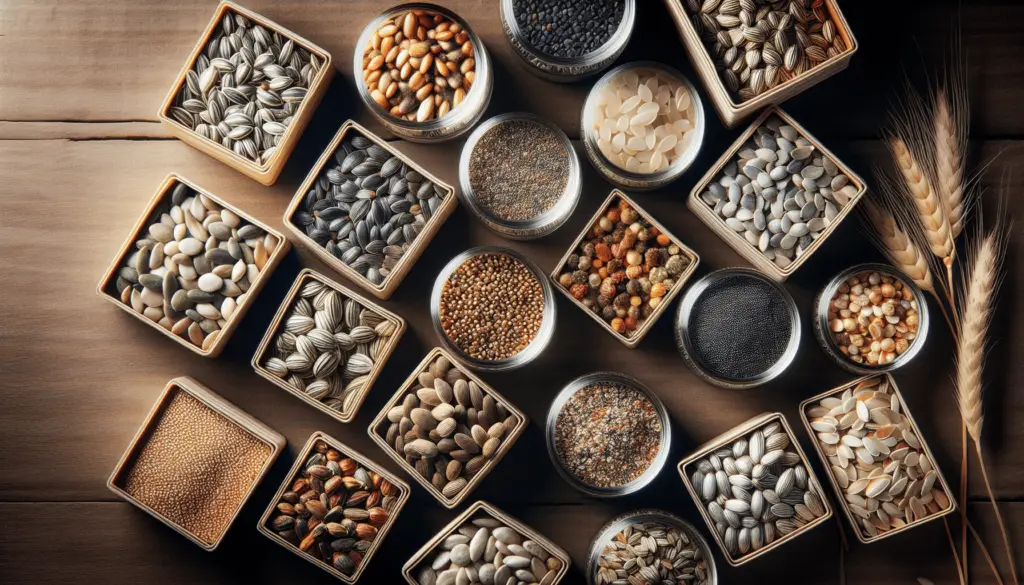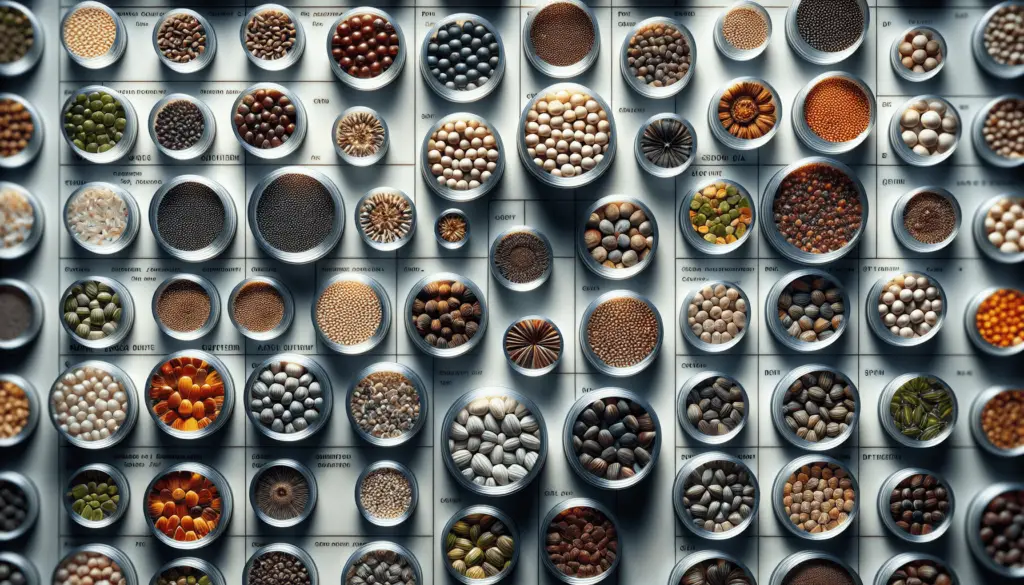Are you interested in preserving seeds for long-term use?
Preserving seeds can be a rewarding and practical way to ensure a sustainable source of plants for your garden or farm. Whether you are a seasoned gardener or just starting out, learning how to properly store seeds for long-term use is essential. In this article, we will discuss various strategies and techniques to help you preserve and store seeds effectively.
Why is seed preservation important?
Preserving seeds is crucial for maintaining genetic diversity, ensuring future food security, and adapting to changing environmental conditions. By saving seeds from plants that have thrived in specific climates or soils, you can create a collection of seeds that are well-suited to your growing conditions. Additionally, preserving seeds allows you to save money on purchasing new seeds each season and helps you become more self-sufficient in your gardening practices.
Understanding seed viability
Before diving into seed preservation techniques, it is important to understand the concept of seed viability. Seed viability refers to the ability of a seed to germinate and produce a healthy plant. Over time, seeds can lose their viability due to factors such as improper storage conditions, age, or exposure to moisture. It is essential to test the viability of your seeds before storing them to ensure that they will germinate when planted.
Preserving seeds: techniques and strategies
When it comes to preserving seeds for long-term use, there are several techniques and strategies that you can use. From drying and cleaning seeds properly to storing them in the right conditions, each step plays a crucial role in maintaining seed viability. Let’s explore some effective strategies for preserving seeds.
Drying seeds
Drying seeds is one of the most important steps in seed preservation. Properly dried seeds have a lower moisture content, which helps prevent mold growth and extends their shelf life. To dry seeds, spread them out in a single layer on a paper towel or screen and place them in a warm, well-ventilated area. Make sure to stir or shake the seeds occasionally to ensure even drying. Once the seeds are completely dry, store them in airtight containers to protect them from moisture.
Cleaning seeds
Before storing seeds, it is essential to clean them to remove any debris, chaff, or plant material that may harbor pests or diseases. You can clean seeds by winnowing, sieving, or using a seed cleaner. Winnowing involves tossing the seeds in the air to separate them from the chaff, while sieving allows you to sift out smaller particles. A seed cleaner machine can also be used for larger quantities of seeds. Cleaning seeds not only helps prevent the spread of pests and diseases but also improves the overall quality of stored seeds.
Labeling seeds
Properly labeling seeds is another important aspect of seed preservation. When storing seeds, it is crucial to label them with the plant variety, date of collection, and any other relevant information. By clearly labeling your seeds, you can easily identify and organize them for future use. Consider using waterproof labels or markers to prevent smudging or fading over time. Organizing your seeds in labeled containers or seed packets will help you stay organized and avoid confusion when planting.
Choosing the right containers
Selecting the right containers for storing seeds is key to maintaining their quality and viability. Avoid using plastic bags or containers that do not allow for proper air circulation, as this can lead to mold or mildew growth. Opt for glass jars, paper envelopes, or metal tins that provide a breathable environment for seeds. Make sure the containers are clean, dry, and airtight to prevent moisture from damaging the seeds. Store seeds in a cool, dark place away from heat and sunlight to prolong their shelf life.
Seed storage conditions
Proper seed storage conditions are critical for preserving the viability of seeds over time. Seeds should be stored in a cool, dry, and dark location to prevent them from deteriorating. The ideal temperature for seed storage is between 40-50°F (4-10°C), with low humidity levels to avoid moisture buildup. Avoid storing seeds in areas prone to temperature fluctuations, such as attics or basements, as this can decrease their viability. Consider using a refrigerator or freezer for long-term storage of seeds, as these environments provide stable temperatures and humidity levels.
Seed longevity: how long can seeds last?
The longevity of seeds varies depending on the plant species, storage conditions, and seed quality. While some seeds can remain viable for several years, others may lose their viability more quickly. Understanding the lifespan of seeds can help you plan for future plantings and ensure a successful harvest. Let’s take a closer look at the longevity of different types of seeds.
Short-lived seeds
Some seeds have a short lifespan and may only remain viable for a year or two. These seeds, such as onions, leeks, and parsnips, have a shorter shelf life due to their low moisture content or susceptibility to degradation. It is important to use short-lived seeds within a year of harvesting or purchase to ensure successful germination. Store these seeds in a cool, dry place and avoid exposing them to excessive moisture or heat.
Medium-lived seeds
Medium-lived seeds typically remain viable for 2-5 years under proper storage conditions. Examples of medium-lived seeds include tomatoes, peppers, and cucumbers. These seeds have moderate moisture content and can tolerate a wider range of storage conditions compared to short-lived seeds. To extend the viability of medium-lived seeds, store them in airtight containers in a cool, dry location. Conduct regular germination tests to determine the viability of these seeds before planting.
Long-lived seeds
Long-lived seeds have the potential to remain viable for 5-10 years or more when stored correctly. Beans, peas, and squash are examples of seeds with a longer lifespan due to their hard seed coats and low moisture content. Properly dried and stored long-lived seeds can withstand fluctuating temperatures and humidity levels without losing viability. To maintain the longevity of long-lived seeds, store them in airtight containers in a cool, dark place. Regularly check the viability of these seeds through germination tests to ensure successful plant growth.
Seed viability testing
Conducting seed viability tests is an essential step in determining the germination rate of stored seeds. There are several methods for testing seed viability, including the paper towel method, seedling emergence test, and tetrazolium test. The paper towel method involves placing seeds on a damp paper towel and monitoring their germination over a period of time. The seedling emergence test requires planting seeds in pots or trays and observing their growth. The tetrazolium test involves staining seeds with a solution to determine their viability under a microscope. By regularly testing the viability of your seeds, you can identify any issues early on and make informed decisions about seed storage and planting.

Seed saving tips and best practices
In addition to preserving and storing seeds for long-term use, there are several seed-saving tips and best practices to consider. These practices can help you maximize seed quality, avoid cross-pollination, and maintain the genetic diversity of your plants. Let’s explore some helpful tips for saving seeds in your garden or farm.
Isolation distance
Maintaining isolation distances between different plant varieties is crucial for preventing cross-pollination and ensuring seed purity. Cross-pollination occurs when pollen from one plant variety is transferred to another, resulting in seeds with mixed genetics. To prevent cross-pollination, separate plant varieties by the recommended distance based on their pollination method (e.g., self-pollinating, wind-pollinated, insect-pollinated). Consider using physical barriers such as row covers or hand-pollination techniques to control pollination and maintain seed purity.
Selecting healthy plants
When saving seeds, it is important to select seeds from healthy, disease-free plants with desirable traits. Avoid collecting seeds from plants that show signs of pests, diseases, or stress, as these characteristics may be passed down to future generations. Choose plants that exhibit vigorous growth, uniformity, and resistance to environmental factors. By selecting seeds from healthy plants, you can improve the quality and adaptability of your seed collection over time.
Drying seeds properly
Properly drying seeds is essential for maintaining their viability and preventing mold growth. After harvesting seeds, allow them to air dry in a warm, well-ventilated area until they are completely dry. Avoid drying seeds in direct sunlight or high humidity conditions, as this can reduce their shelf life. Once the seeds are dry, store them in breathable containers to prevent moisture buildup. Regularly check the moisture content of stored seeds to ensure they remain dry and viable for future plantings.
Crop rotation
Implementing crop rotation practices in your garden can help prevent soil-borne diseases, improve soil health, and maintain seed quality. Rotating crops each season can break pest cycles, reduce nutrient depletion, and enhance plant resilience. Consider planting different crops in the same location each year to avoid the buildup of pests and diseases. By rotating crops regularly, you can improve seed quality, yield, and overall garden health.
Conclusion
Preserving and storing seeds for long-term use is a valuable skill that can benefit both novice and experienced gardeners alike. By understanding the importance of seed preservation, learning effective techniques for storing seeds, and following best practices for seed saving, you can ensure a sustainable source of plants for your garden or farm. Remember to dry and clean seeds properly, label and organize them for easy identification, and store them in cool, dark conditions to maintain their viability. By incorporating these strategies into your seed-saving routine, you can enjoy a successful harvest year after year. Happy seed saving!

